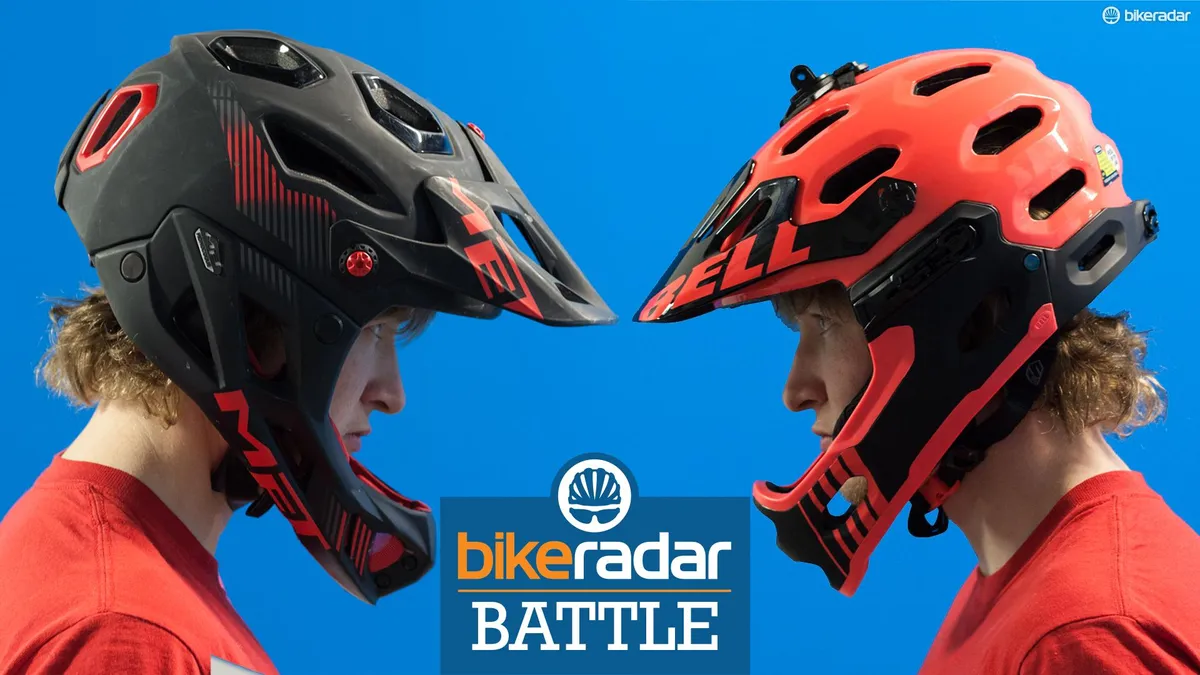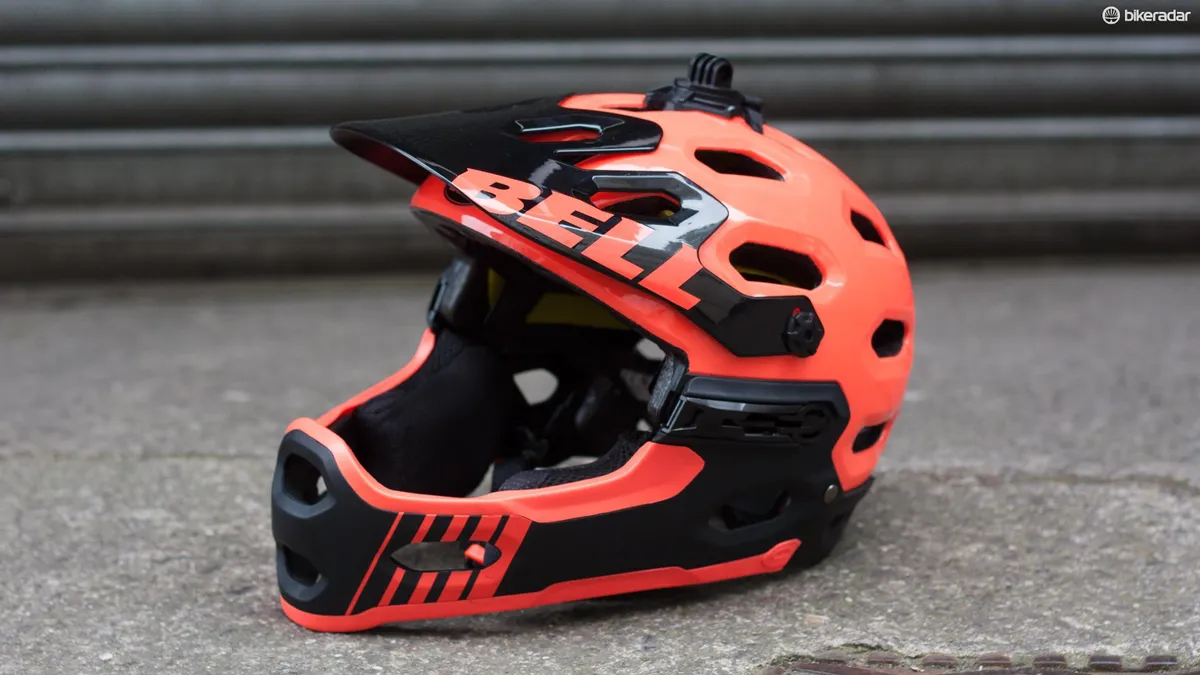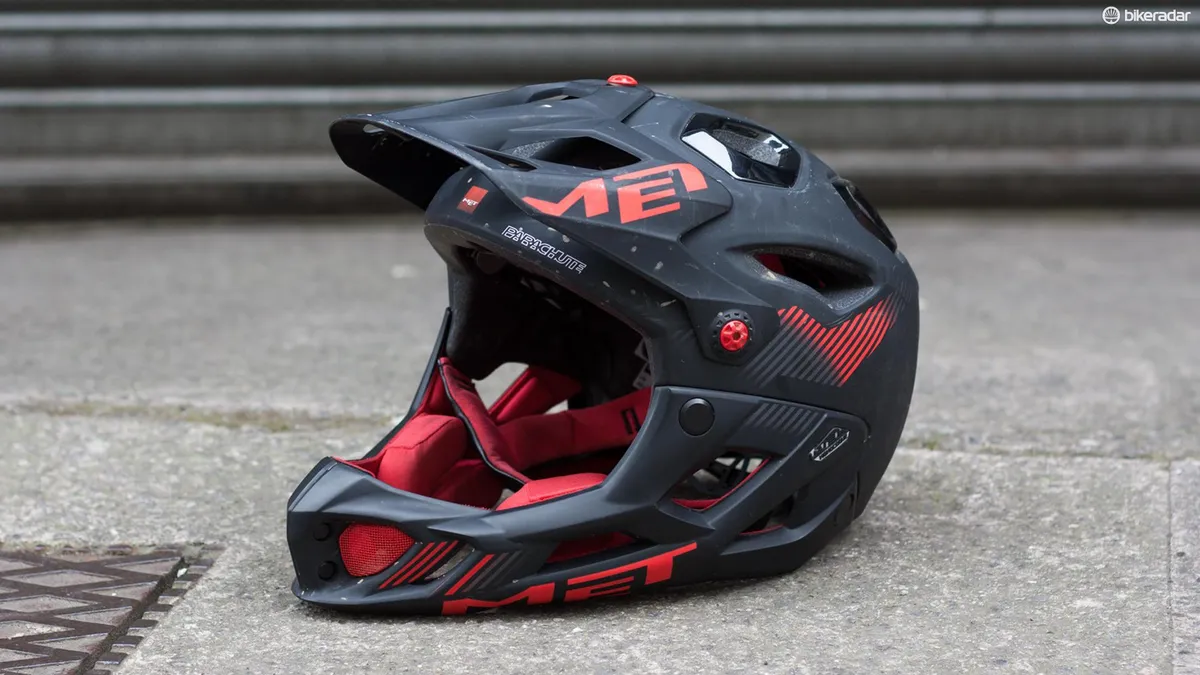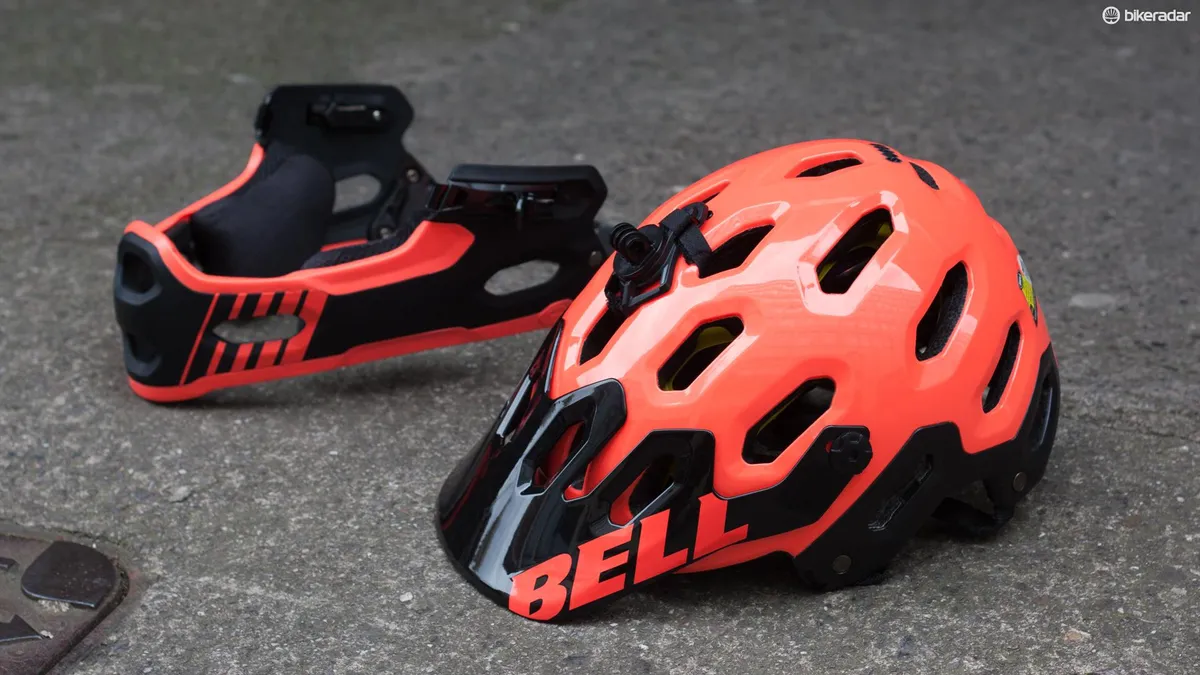The fast-paced world of enduro racing is evolving, with bigger tracks, faster riders and more rules and regulations. Mirroring the rise of enduro racing is the growth in the numbers of riders hitting their local trails on more and more capable bikes.
For those looking for more protection, full-face lids make a lot of sense, but if you pedal all day, how do you balance protection and breathability? MET and Bell are two lid manufacturers looking for that answer. We’ve taken them head to head to find out which should receive your well-earned cash.
Bell Super 2R

- Price: £150 / US$200 / AU$299 (standard); £175 / US$220 / AU$329 (MIPS)
- Removable, ventilated chin guard
- Secures via three clasps offering plenty of rigidity
- Same upper as the well-regarded Bell Super
- MIPs anti-rotation protection
- Adjustable visor, cheek pads and GoPro mounting options
MET Parachute
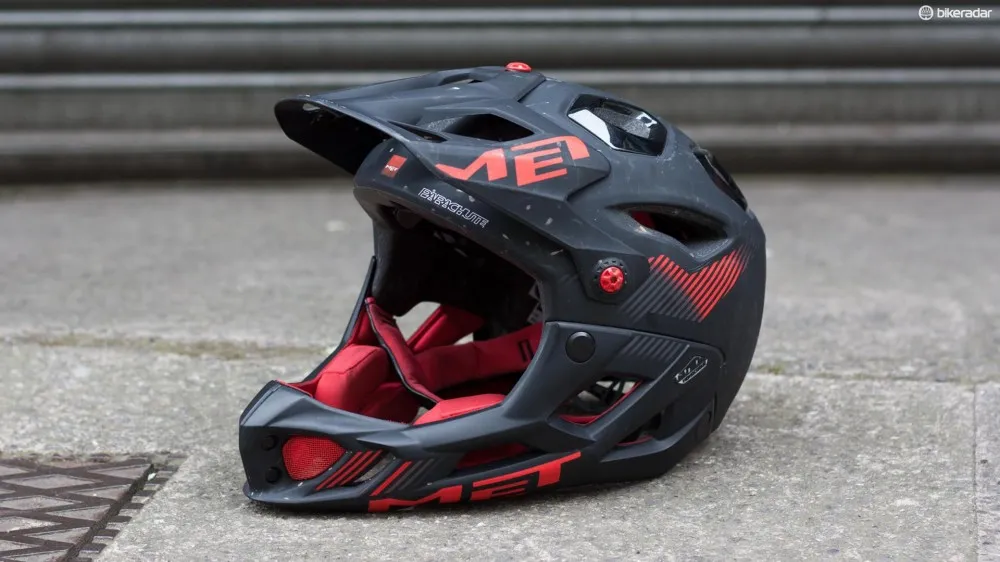
- £170 / US$N/A / AU$279
- Lightweight, well ventilated full face construction
- Meets full ASTM safety standard for full-face lids
- Double-D buckle chin strap
- Adjustable cheek pads and goggle clip
Bell Super 2R vs MET Parachute: Protection
On the (full) face of it, both helmets offer the same level of protection, but each has distinct features. The MET Parachute complies with the ASTM safety standard that’s required of full-face helmets – this is the same benchmark that your Troy Lee D3 Carbon complies to. While the removable chin guard of the Bell Super 2R will undoubtedly offer some extra protection in the event of a faceplant, it doesn’t meet this standard.
Turning to the upper, there are two versions of the Bell – standard and MIPS. The standard option has the usual EPS in-moulded construction we’re used to seeing on the majority of helmets. The addition of MIPS gives the brain protection against rotational forces found when the helmet suffers an angled impact, and Bell has also added the ICEdot emergency identification tag to its lids. MET, meanwhile, has gone with the standard EPS/in-moulded construction, with the addition of a 'Homothetic Embedded Skeleton', purportedly to help spread impact force.
Winner: draw
Bell Super 2R vs MET Parachute: Fit
Bell and MET each have well established and developed retention systems for their helmets. Bell’s TAG fit system offers a decent level of adjustment that’s easy to use with gloves on thanks to the rubber finish of the adjustment wheel. The Parachute has a more exposed, but smaller wheel, but the Safe-T Advanced adjustment system feels like it encloses the head better, with changes in tightness being more noticeable all around the head.
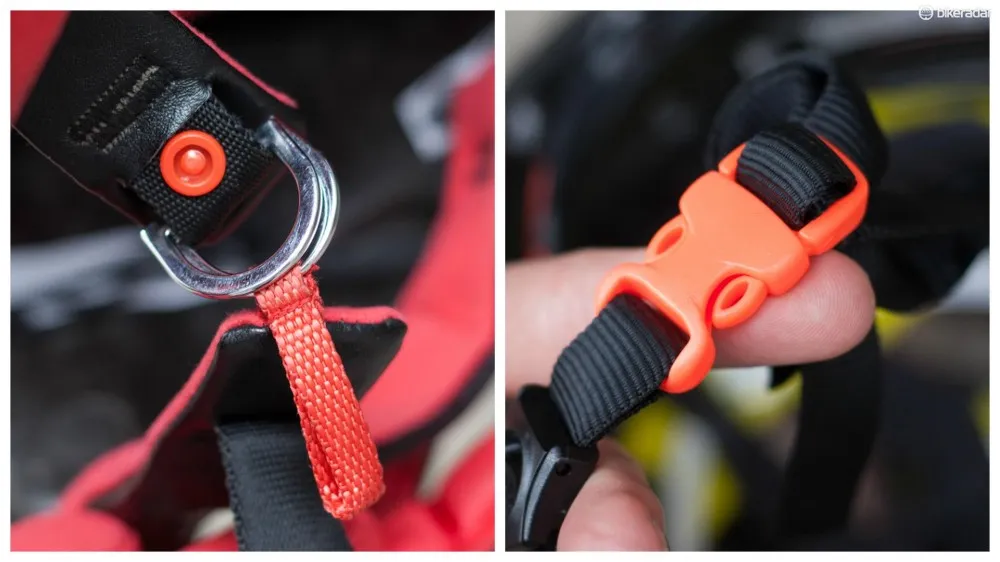
The MET uses a double D buckle while the Bell sticks with a simple quick release item
Both helmets have adjustable and removable cheek pieces, to adjust the fit and comfort of the helmet when it’s on the head – we’ve found getting the right thickness is crucial for comfort – too thick and there’s too much pressure on your cheeks, too loose and the helmet will wriggle around and safety will be compromised. While both helmets are pretty open at the front, the Parachute has a slightly more open face. On this front then, the removable aspect of the Bell’s chin bar is a bonus, as we’d sooner ride without the cheek pads than with on a climb. We’re giving this to the Bell thanks to the added versatility, but it’s a close run contest.
Winner: Bell
Bell Super 2R vs MET Parachute: Ventilation
Ventilation – or the lack of it – is probably the major drawback of any full-face lid, and it’s here where these lightweight enduro helmets will live or die in terms of their rider appeal.
Up top, the Bell just about shades the MET, with overbrow venting and well-sussed placements of vents making it a relatively breezy affair. On climbs, removing the chin piece is recommended though, because the chin bar is bulkier than the MET’s and lessens airflow around the face. This is exacerbated by the face opening being smaller on the Bell than the MET – this was most noticeable on hot, sweaty hard-cranking sections where you work up a head of steam – the MET was much cooler around the face than the Bell.
So while the Bell was cooler up top and the MET lower down (with chin bar in place), we’re giving this one to the MET – perspiring heads are nothing new to most riders, but the difference in sweat levels with the chin bar in place means the MET was a nicer place to be overall.
Winner: MET
Bell Super 2R vs MET Parachute: Extras
Both helmets come with an adjustable visor, which makes a bigger difference than you’d think thanks to being able to shift it up for better vision and goggle stowage, and down when it’s pouring with rain. The Bell has slightly more adjustment in it’s visor.
If you’re into filming your rides then you’re in luck – both helmets have GoPro mounts, but the MET also benefits from a goggle clip.
Winner: MET
Overall winner: MET Parachute
These are both great options, and with neither lid (thankfully) taking a knockout blow it’s a tough call to pick a winner. But if we’re serious about using the added protection of a full-face helmet, the better ventilation and larger opening mean that in our judges' eyes the MET Parachute just snatches the prize on points.
